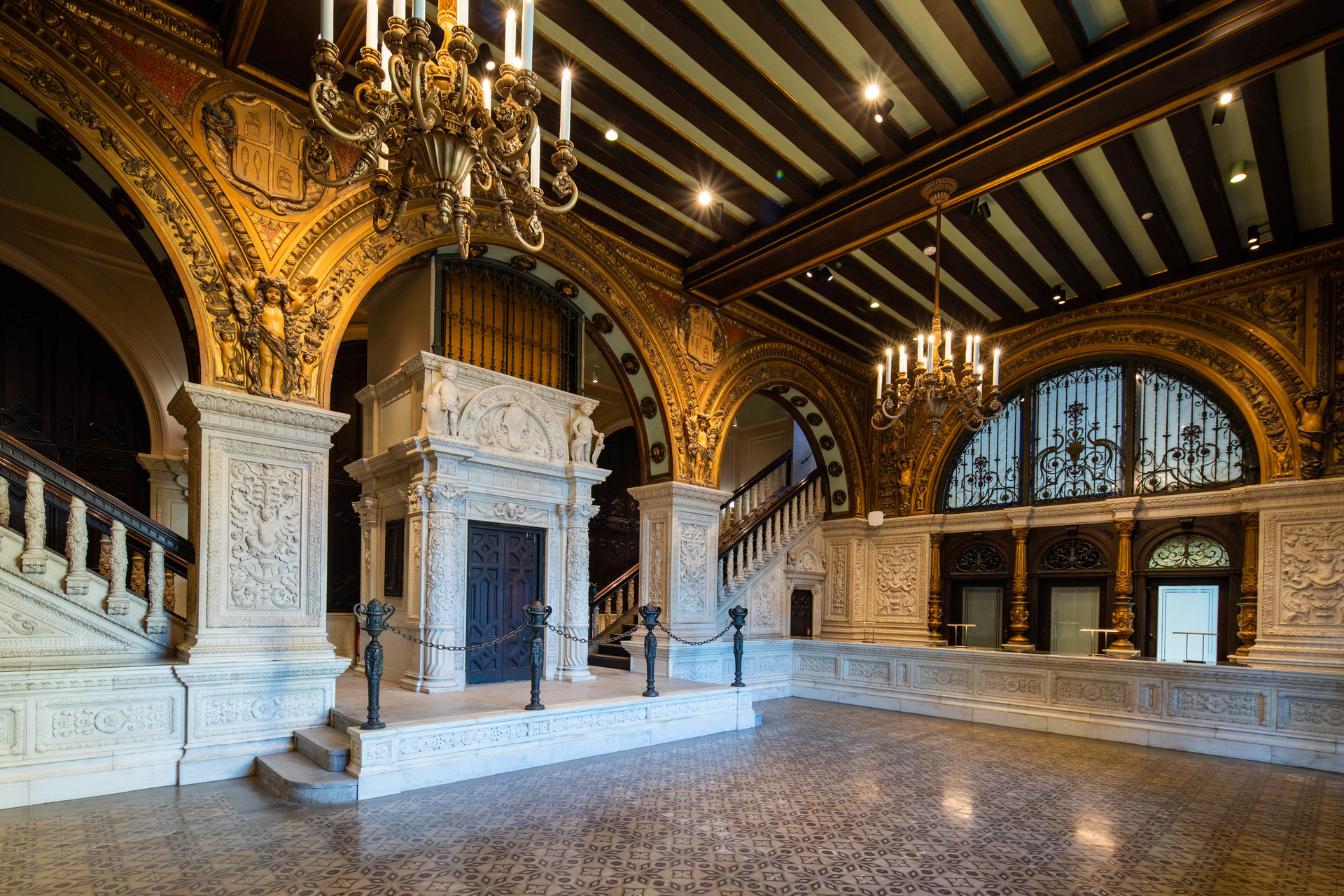A brief history of a storied building
Julia Morgan, the first licensed female architect in California, designed the five-story building on Broadway and 11th streets in a mix of Spanish Colonial Revival and the Mission Revival style of architecture popular throughout Southern California in the early 20th Century. Soaring ceilings, arched windows and carved pilasters gave the building an air of grandeur and cemented it as an architectural icon in the city’s landscape. The building’s showpiece was its lobby, which Morgan ornamented with hand-painted tiles, elaborate ironwork and magnificently carved wood details. Morgan went on to design the Hearst Castle.
For 76 years, the Examiner, which later became the Los Angeles Herald Examiner, reigned as Hearst’s flagship newspaper and a dominant voice in Los Angeles life and politics. The building was shuttered after the Herald Examiner ceased publishing in 1989. It was used sporadically as a filming location until 2015 and ASU began renovating the building in 2020.
Modernizing the space while preserving the historic character of the building was a high priority during the renovation. The building’s exterior was refurbished to its original state. New roofing and fire sprinklers were installed, dropped ceilings and walls were removed and the original skylights were brought back to life.
The tall, arched windows facing Broadway had been boarded up since workers hurled bricks through the windows during a labor dispute that spanned 10 years in 1967; they were restored. An interior stairwell Hearst used to get from the newsroom’s third floor to his apartment on the fifth also was restored. The solid bronze handrail still bears dents from bat-wielding strikers.
Much of the renovation work was painstakingly delicate, especially the ornate lobby. To ensure that key architectural details were preserved, a conservator helped oversee the work — from cleaning tiles to repairing light fixtures and a grand two-faced clock.
The renovated building has an open, modern feel and visitors enter through a new, separate lobby with access to a two-story event space. The third and fourth floors house classrooms, conference rooms, small “huddle spaces,” sizable open work areas and studios for broadcast and film production. Hearst’s former apartment on the fifth floor was converted into offices.
“Not only does the building illuminate the city’s rich history dating back more than a century, but with a new vision, it now bridges that tradition with innovation and enables us to help advance the downtown’s intellectual, cultural and economic vibrancy,” said ASU President Michael M. Crow.
Much of the building’s history and renovation details first appeared in the Cronkite Journal. Kasey Brammell, now a Walter Cronkite School of Journalism and Mass Communication alumna, contributed to that article as a student reporter.
